
Overview
Aiming for solving the real-world problem of delayed sleep phase syndrome (DSPS), OSO is an IoT smart sleeping solution that will promote a good night’s sleep by intuitively balancing the overall environment of light, sound, aroma, and temperature for the user. I was in charge of UX research, product design & development, and implementation.
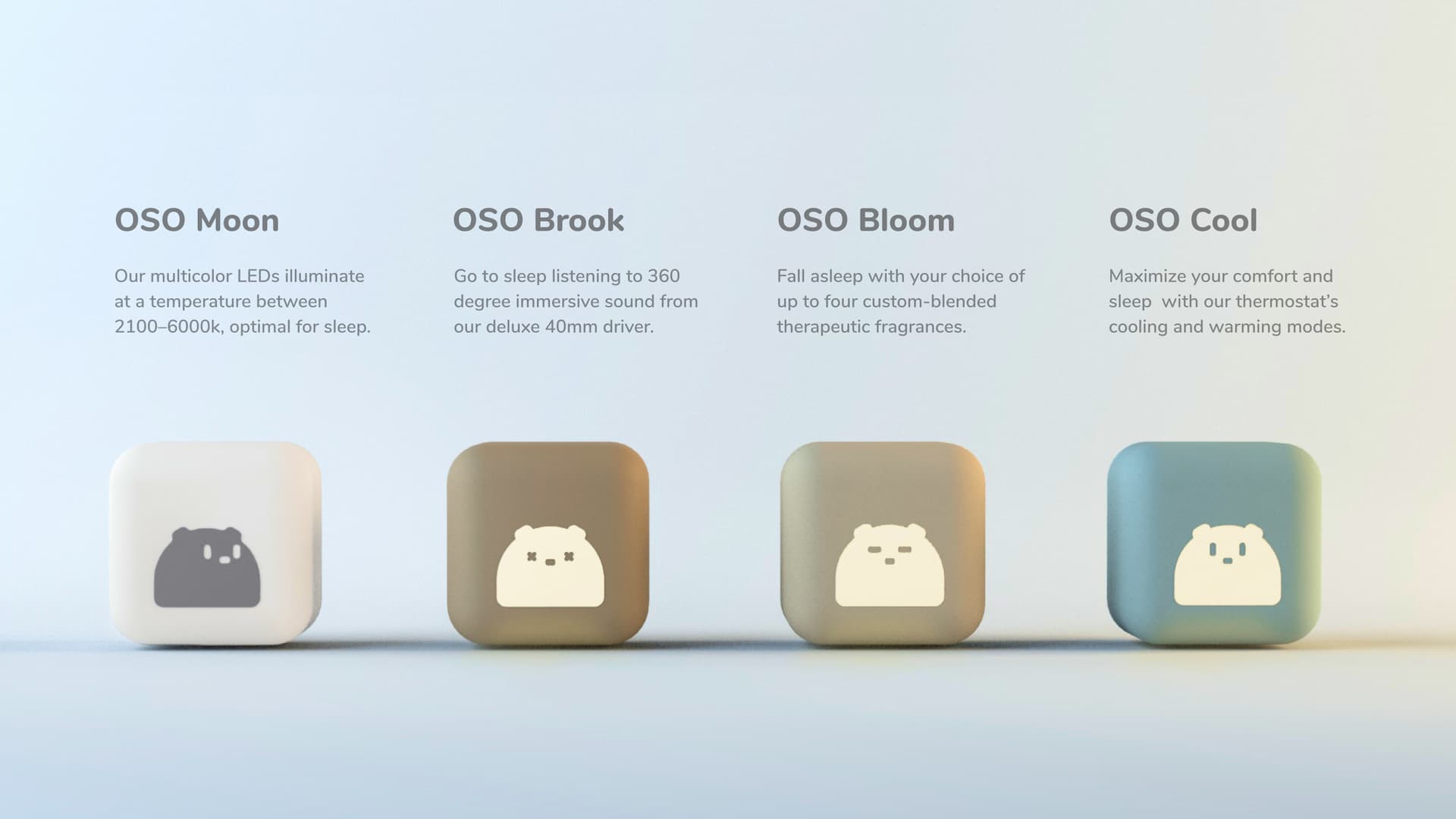

Research
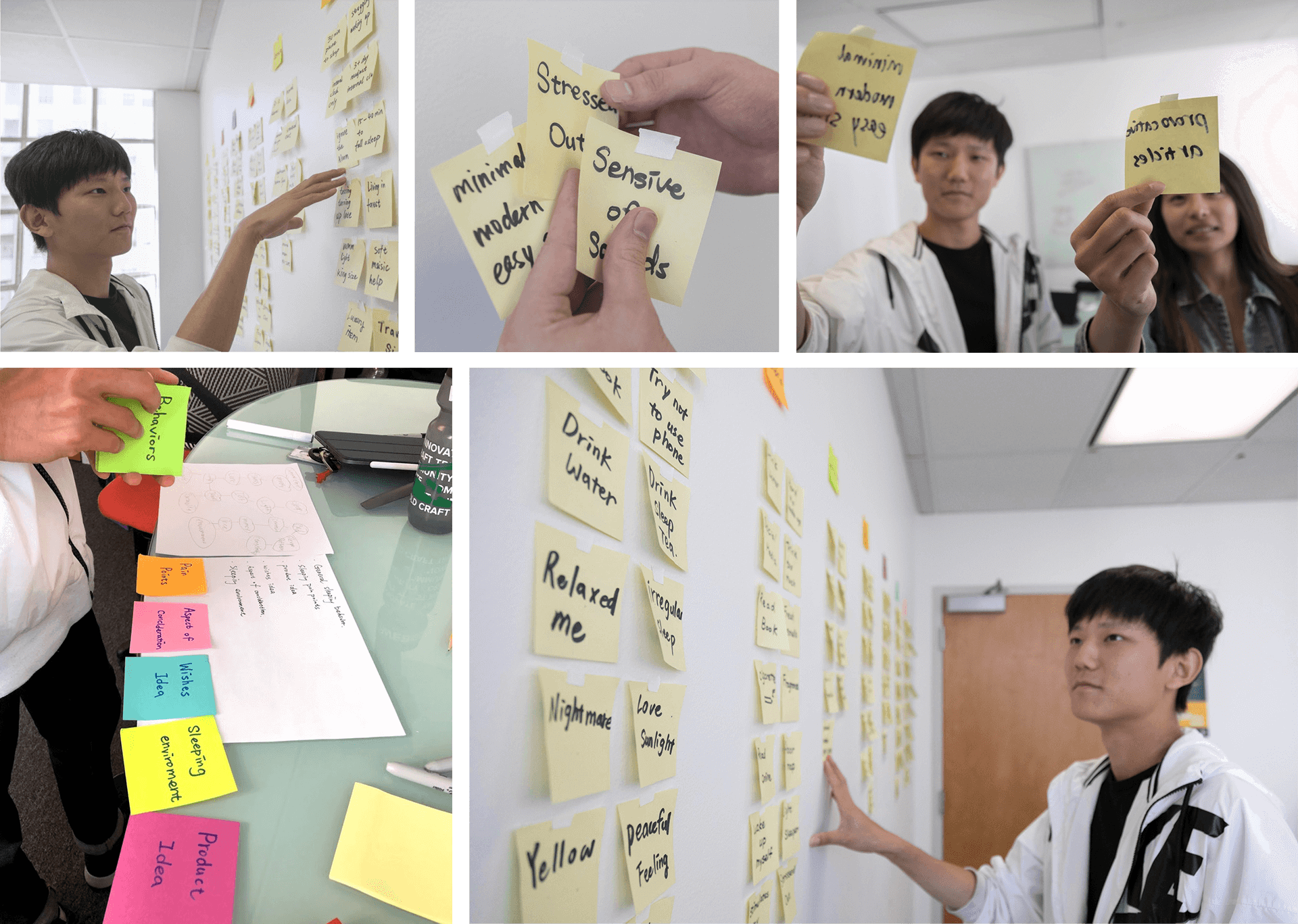
In order to understand the context deeper, we conducted user surveys, competitive audit, scientific research, and expert interviews. During the initial research phase, an exploratory survey was conducted to learn about people’s sleep quality. Out of 67 responses, it was discovered that 84% of people are using their phones before bed, and 72% of them are on social media. Then, we conducted in-depth user interviews and took the top 10 most insightful interviews to map out for synthesis.

Key insights
- ●Most of our target audience feel stressed during the day and want to fall asleep/wake up naturally.
- ●Most users have a hard time keeping a consistent sleep pattern and want to use an electronic product to adjust common sleep disorders.
- ●Keeping the IoT product small with a minimalistic, portable, and personalized design will help push overall customer satisfaction and sales of the product in a positive direction.
design objective
We are targeting the people who have common sleep disorders, the ages between 16-40 who primarily want to reduce stress levels and fall asleep/awaken naturally by intuitively balancing the overall environment of light, sound, aroma, and temperature.
ideation & process
I lead whiteboard challenge, brainstorming, product sketching, and quick conceptualization, and we finally came up with a user-friendly approach of building a IoT collection that can mimic bear's living environment; adjust sleeping environment so that user can fall asleep naturally. Bear usually associate with sleepy, laziness, nocturnal, and comfort.
Building an IoT device was a big challenge, but the most important thing we took into consideration for building a prototype was implementing sustainable design. The Material I choosed is polylactic acid, which is a thermoplastic aliphatic polyester derived from renewable resources, and it also can use as 3D print material.

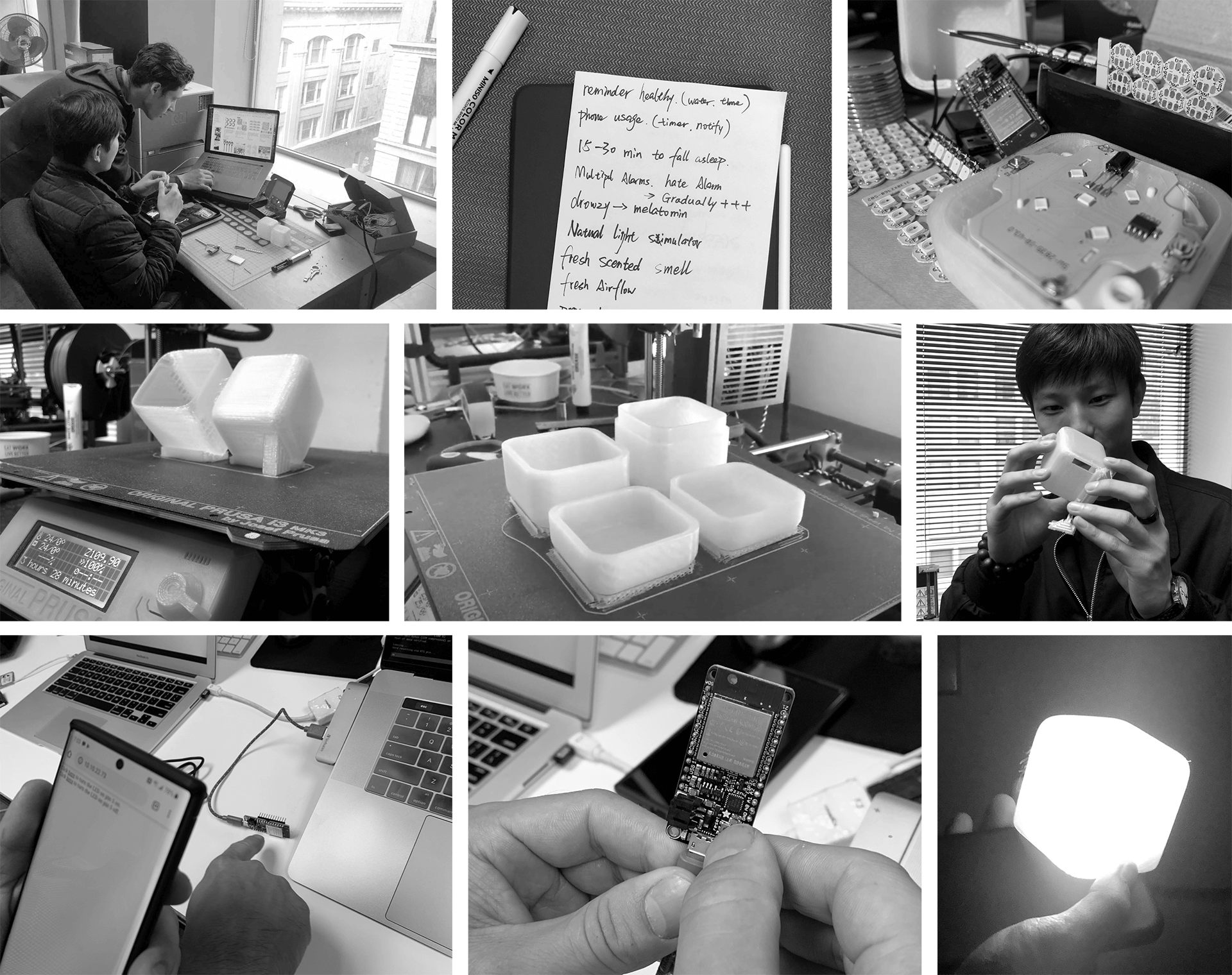
app design
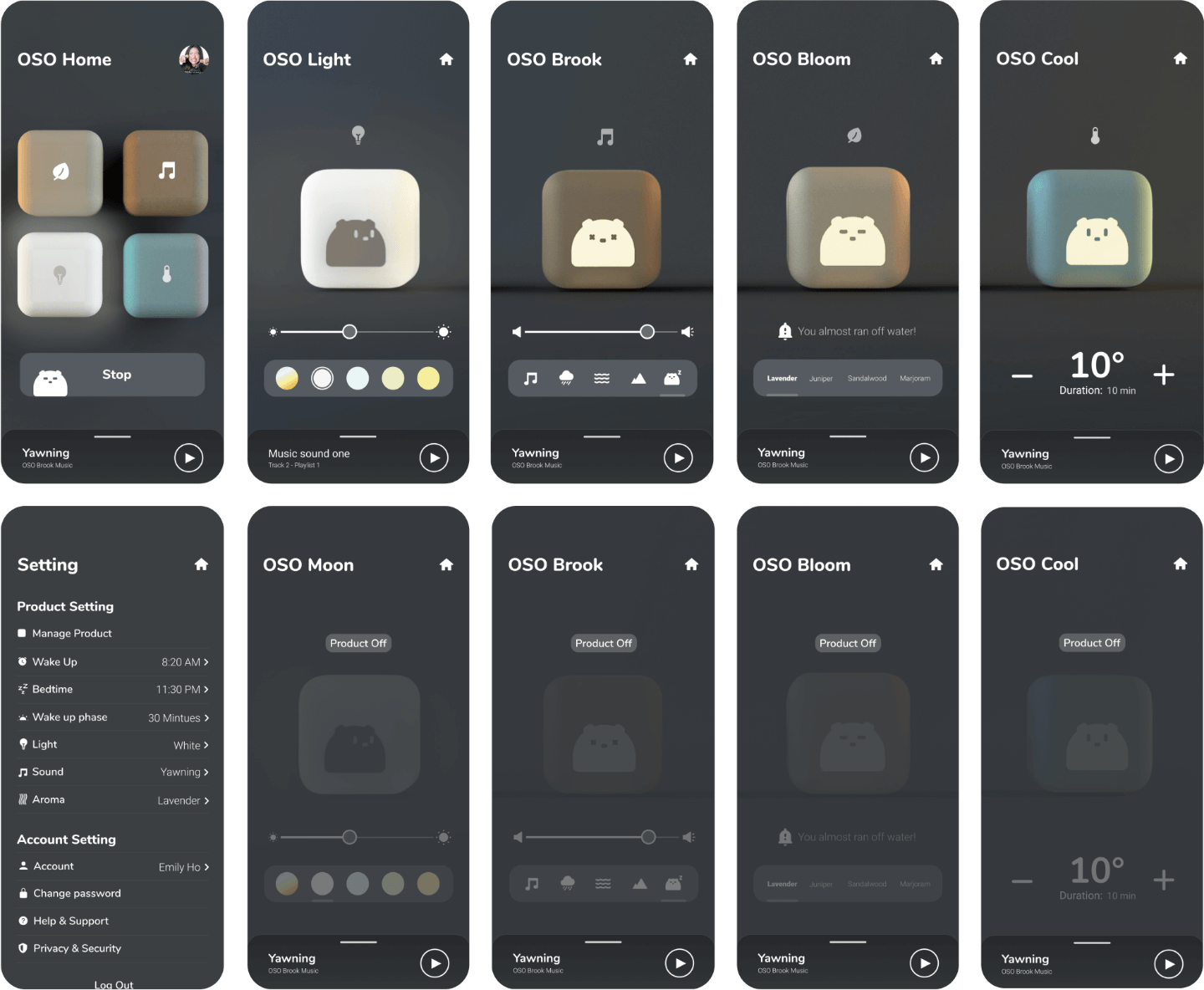
management system
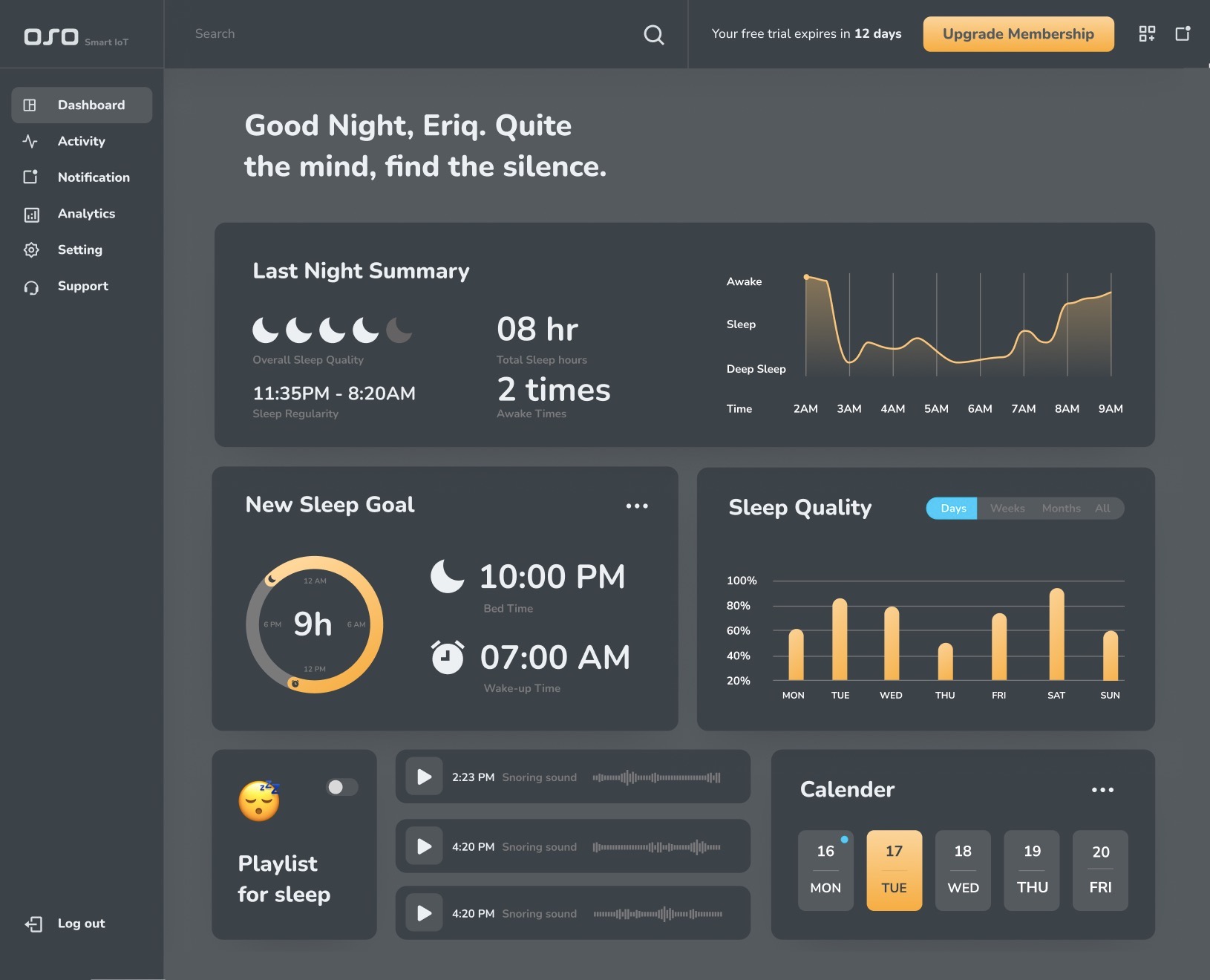
package design
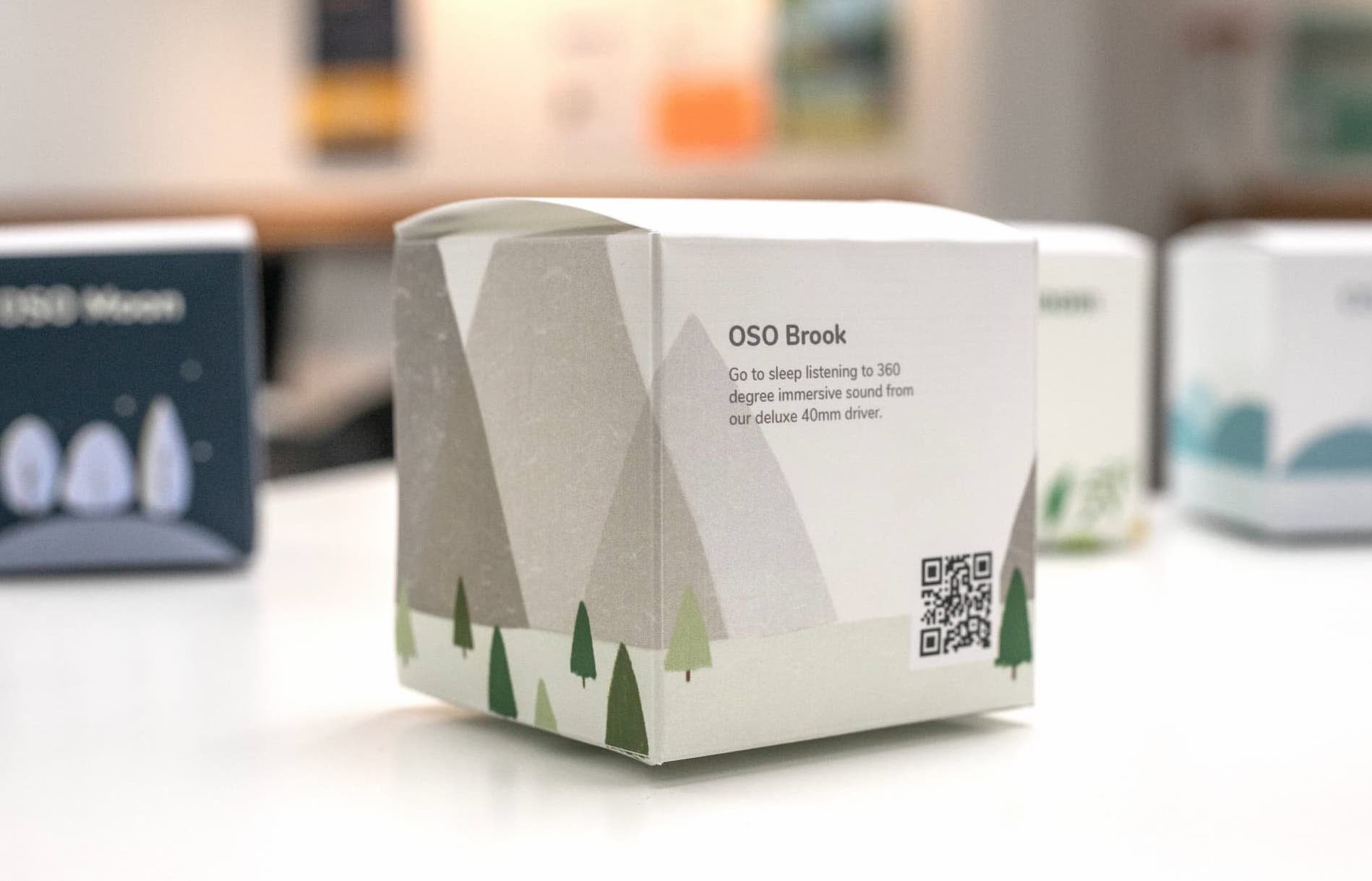
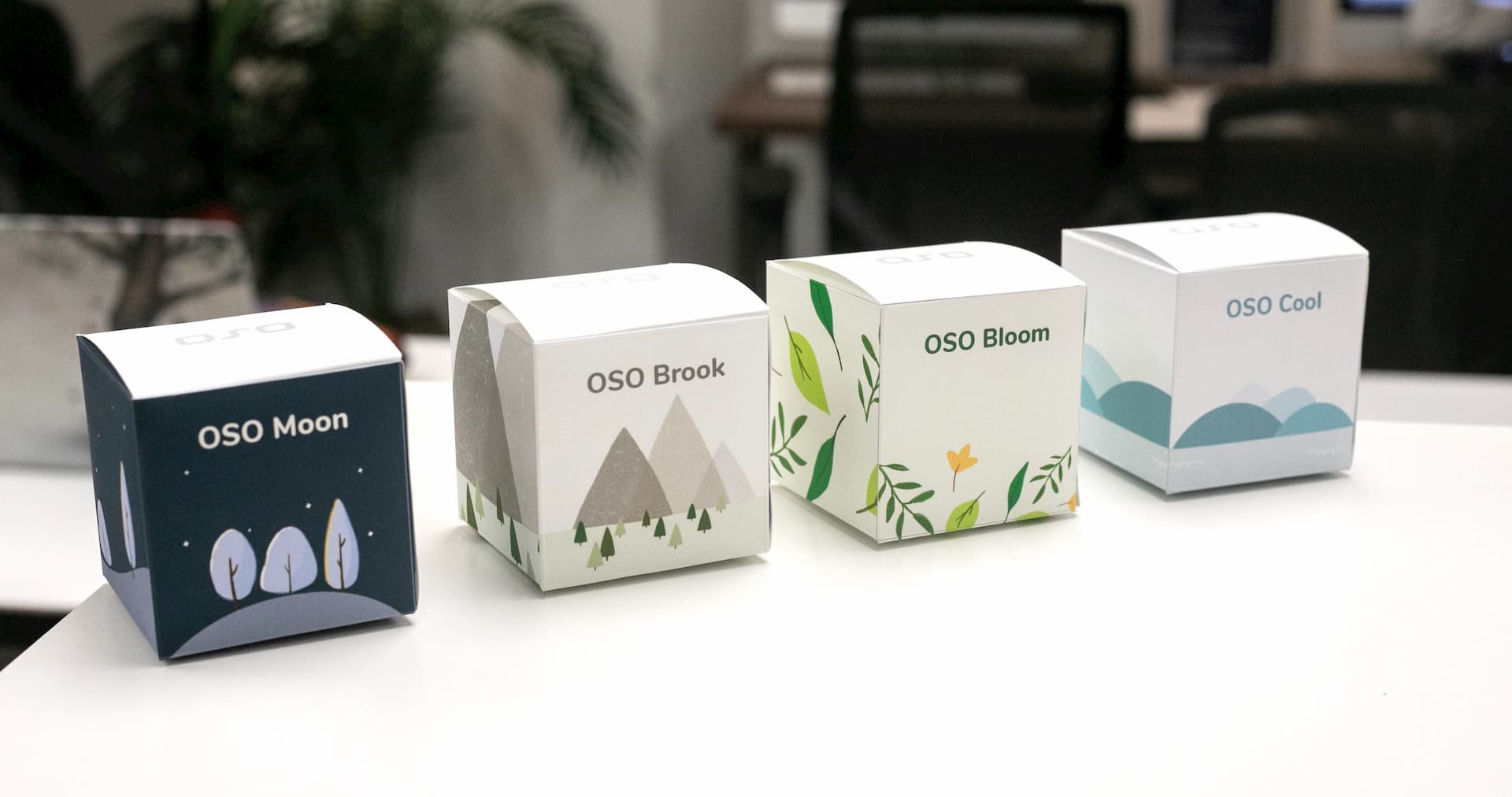
final product
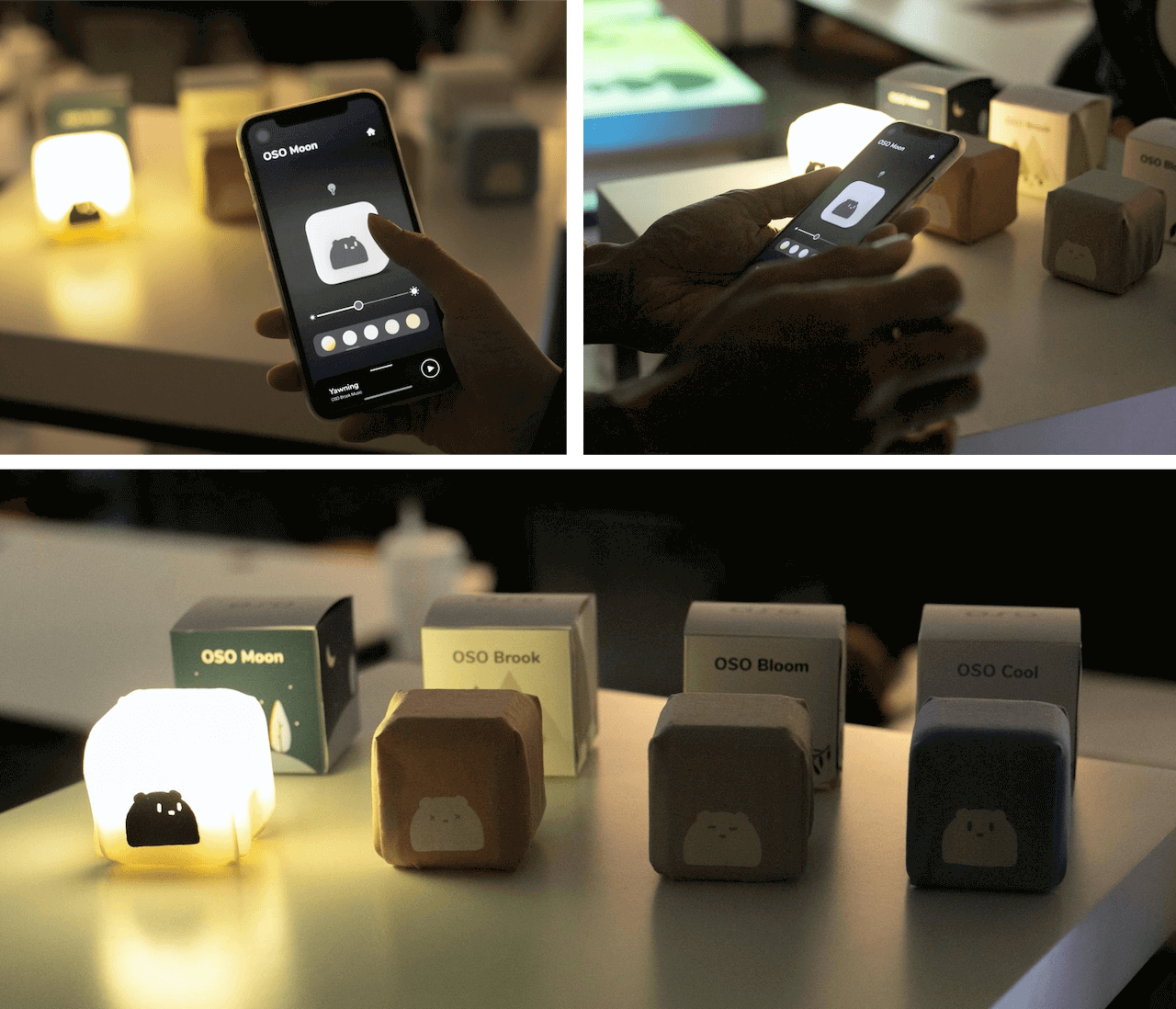
takeaway
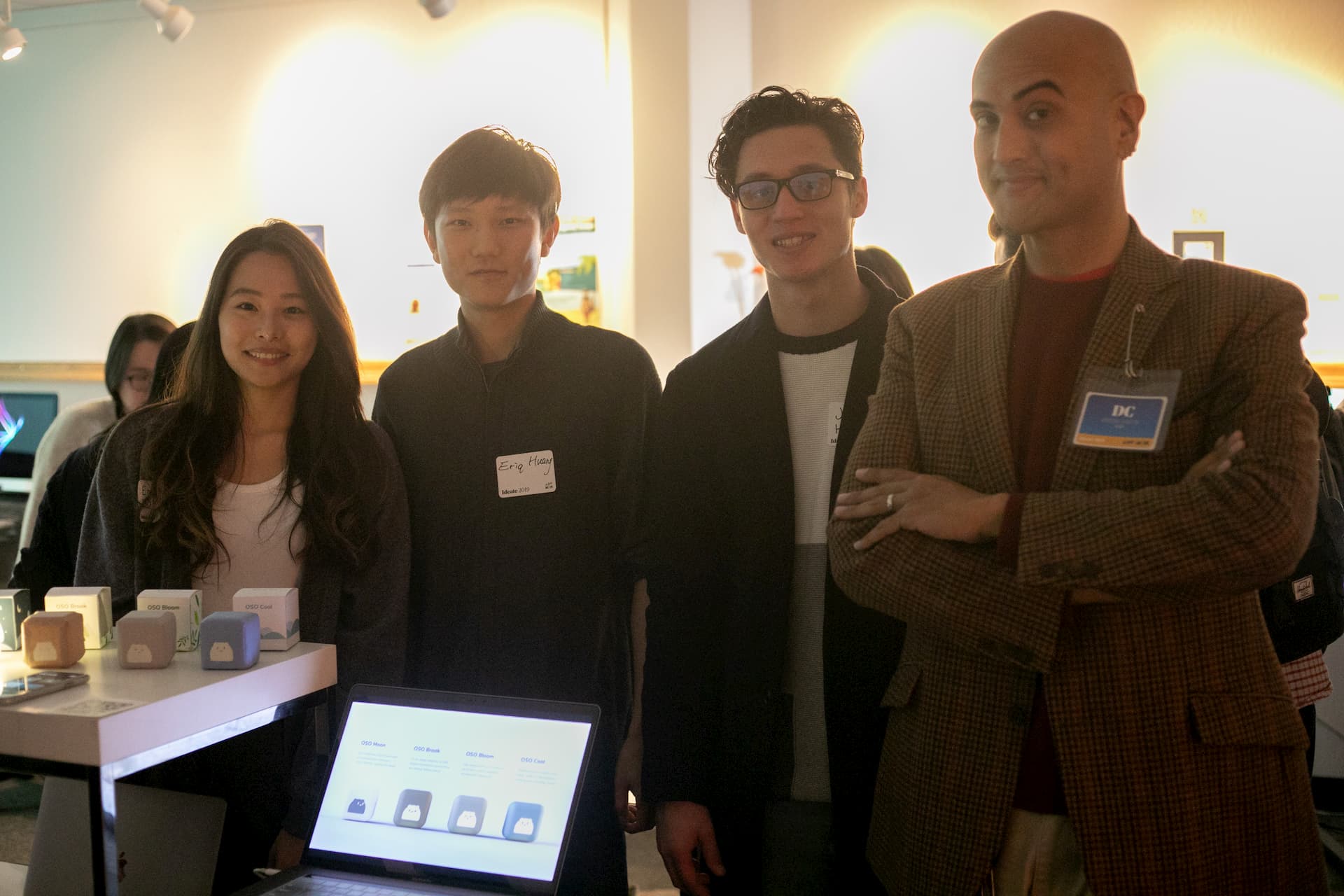
"Alone we can do so little, together we can do so much." An agile team that’s highly effective works as a unit powered by each member’s personal strengths. This encourages team members to speak up when they have ideas, rather than wait until the “right” phase of the process.
Thank you! my teammate Emily Ho(UX Lead) and Jake Herbig(Product Manager). Special thanks to everyone that made this project possible, especially DC Scarpelli, Aaron Lawrence, Hamilton Cline, Andrea Pimentel, Nick Hou, and Jen Kerner.